Last Updated on July 23, 2021

Since these interviews are quite lengthy, I’ll keep the intro short. The second portion of my three-part FRIGHT NIGHT set visit included sit-downs with writer Marti Noxon, director Craig Gillespie, and actors Anton Yelchin (Charlie Brewster), Imogen Poots (Amy Peterson) and Colin Farrell (Jerry Dandridge). Enjoy!
MARTI NOXON:
Q: How do you retain the heart of “Fright Night” because even though the original came about during a huge slasher, as one of the very first (illegible) horror films. It had a lot of heart in the characters, you loved every single person in that script. How do you carry that over to this? How do you translate that?

MN: It’s funny cause that, I would say would be the heart of why I got the job. Because I think other people had come in and talked about vampires and I had come in and talked about the relationship between Ed and Charlie and also about the relationship between him and Amy, you know, Charlie and Amy and his mom and I was much more interested in the stuff that I had always felt like I wanted some filling in on in the original movie. I had a lot of questions, I loved the original movie for just that reason. And certainly my training on “Buffy” was all about character and what’s the story you’re telling, and what’s the theme and what’s the relatable thing for the audience, I feel like, oh yeah, I know what that is. I felt like there were a lot of seeds in the original movie that hadn’t been fully exploited. And the great thing about Dreamworks was that they were really committed to making a movie with a real first act. And they were really interested in kind of approaching the anthelum (?????) formula with this movie. And I feel like because of that decision, that’s why we’ve drawn like Craig Gillespie and Colin and Anton and Tony and all these amazing actors because we wrote a character movie that also happens to be a really scary… and I think because probably, I wouldn’t say scarier than the original but because time moves on, it affects some of what they are and stuff I think it feels just a little more real. But that was exactly where I was coming from.
Q: Can you talk a little about some of the changes that were made, for example, Peter Vincent’s no longer (illegible). Can you talk about some of the decisions that were made in changing characters.

MN: Just, you know, again, it’s however many years later, and there’s not really, I mean… the people who were watching that movie had a very strong point of reference for Peter Vincent being a TV horror movie host. You know, there are few still out there but it’s few and far in between. So we were trying to think of… I was really inspired by the idea that Penn & Teller have this amazing supernatural collection. And I was like, well, who can be a real asset? It has to be set in Vegas, specifically because I have been thinking about that for a long time, having spent some time there during the election. I was out in Park County and these various places, and I was like, where better for a demon to hide out than in Vegas? Like, it’s a transient population, people sleep all day and party all night and nobody would notice if people just went missing, you know? So, I’d already been thinking about Vegas and it was a natural, like… I knew about the Penn & Teller museum basically and I was like, ok, we gotta… but they can’t be cynics like Penn & Teller. They have to be somebody who actually might believe and that’s how we (illegible).
Q: (Illegible)… the original had partial influence of “Rear Window”… (illegible).
MN: Yeah, absolutely. I mean, I think that we didn’t want to do too closely what “Disturbia” became, but we actually kept that on that their houses were 2 feet apart. And again, because it’s a housing development, they’re even closer than they were in the original movie. It’s that thing where you’re literally can reach out and touch the house next door.

Q: (Illegible)… is this the only thing where we have to retain the structure, everything else is fair game or…
MN: I mean, with this movie, there were some classic sequences that we knew we wanted to take a different, reinvent, but reference for sure. There are a couple of moments where I knew there were like, key moments in the film that I wanted to (illegible) wanted to surprise people. There was one in particular (illegible). There’s one moment in particular where I think that if you know the original movie, you know what’s gonna happen and it doesn’t happen.
Q: Can you tell us what it is?
MN: I can’t tell you. But yeah, I hope that people who love the original will feel like there’s enough of the original, but we definitely reinvented…
Q: (Illegible) … decision… 3D…
MN: You know, it’s interesting because I feel like the culture around 3D particularly the directors, is really changing. It’s gone from feeling like you have to have these giant pop-out moments for the audience, like wooooahhh, to feeling it more as an atmosphere. So there are many opportunities in the script for real 3D moments. But we didn’t say, ok, Jerry’s gonna like leap towards the camera at this moment, it was much more like, where is it natural in the movie to have that? We emphasized it, but we didn’t sit down and go… it’s much more like… It gives a much more immersive feeling to the whole movie. The whole time you feel like you’re in it. It’s beautiful, I mean just watching it on the screen, it’s incredible.
Q: How much effort did you put into how the vampires were gonna be in this while paying homage to the first one while also (illegible, sorry baby!) … right now, Twilight…
MN: I had a specific take on it. And of course the people who designed the creatures and the look then took that and expanded it. You know it’s hard because like, everything has been done and one of the great things about the original movie was how great some of that design was. So, I think we sort of modernized that, I don’t think we tried to create an entirely new vampire, you know. But we definitely had a theme for the vampire. One of the first things that happened when I worked on the movie was they said, yeah, we’re just kind of thinking that this vampire is more like Jaws. So you’ll see some sort of almost shark-like elements in the design.
Q: As a writer, how do you avoid the Buffy comparisons? How do you break Buffy-speak? Do you find yourself falling into writing the characters like that?

MN: Yes and no. I would say part of the reason why I survived the Buffy experience was because of the ear for that. I mean, it’s not nearly as stylized. It’s funny, I went back recently and watched some Buffy because I was doing some lecturing and I was like, wooow! We were giving The Gilmore Girls a run for their money. And what’s so funny is that I was so critical of other people’s like, highly stylized dialogue because it’s so unreal, I went back and watched a couple of episodes and was like, wooow! Nobody ever speaks about spin, you know. The goal in this one was I think to more create a language for the teenagers that felt authentic. And they’re more clever than I am for sure. It takes me longer to make up their dialogue than my own words.
Q: You’re here…(illegible)…how has it changed the rewriting on the set…?
MN: We did a lot of work before we got here. I have to say this is the least rewriting I’ve done on anything. You know, Craig and I have worked out all the particulars really before we got here. There’s been a few tiny things but really, the amazing thing about Craig is he really adheres to what’s on the page. Although I have to say like Christopher Mintz, Plats and Anton have done so, have gone off the book a couple of times and made it better. And so, there’s been a few times when I was like with Chris, I’d be like, all right, you’ve one-upped me. So there’s been a little bit of improvising and again, just makes it feel natural. But no, we were really rigid before we got here making sure that everything was in that he wanted in. It’s been amazing and I was saying yesterday like when I saw this, not to diss television but when you have twice as much time and people who really know exactly what they’re doing, you get on set and you go like, oh yeah that’s what I meant. Only it’s even better and this film is great, touch-wood, it has been like that. And you know, everybody is sort of pulling the same direction. So we’ll see, I mean, that could be a total curse. It’s like on Buffy when we used to say, it’s gonna be an easy thing, no attacks, you know, like you feel like don’t say that! Don’t say that! But so far it’s going great. It really looks and feels exactly like I would do it.
Q: (Illegible).
MN: No, I mean, the whole point with, again, not to slam other movies but for me the character was always about someone who had an enormous amount of charm but who is not the kind of romantic vampire that’s all over the place right now. Who’s much more using that to manipulate and Colin is so completely seductive. But I was like, gonk (??? Not sure of the word)! You know? Done.
Q: The original (illegible) homage… Universal monster stuff… Does this kind of look back at vampire films for the last 20 years and some of the rules that were created, and some stuff you guys created on Buffy?
MN: You know it’s interesting, I feel like I’ve come to a place where I feel like these movies, because audiences are so sophisticated, you almost try to keep all that to a total minimum. Like, don’t drag the story down with a lot of… it depends what kind of movie it is, but in this one in particular, it’s like let’s just get to it. Like, we all know what vampires are, we all know what the rules are, we over-know it, you know what I mean? And the rules are so malleable now, with True Blood and Twilight, there’s a million different things you can be doing so… I felt like, let’s give as simple an explanation and then just get it to them. So we stayed away from, well this vampire… there’s a little bit of that because there has to be but…
Q: I think it’s more because there has to be (illegible) give the old-school rules like today (illegible). MN: I mean, we adhere to the classic rules but we didn’t make a big deal of it.
Q: You mentioned you had fun with that sort of romantic vampire notion, can you say how it takes any shots and how sharp the shots might be?
MN: I don’t know what’s gonna make it in the movie, I’ll say that.
CRAIG GILLESPIE & ANTON YELCHIN:

Q: I notice you’re using a crane in a really small location, is that what you’re doing for the rest of the film? Doing really cool shots?
CG: No actually I got the idea for this from that U2 3D video, it was awesome with all these crane shots going over a crowd. We’re in a packed environment here so that’s where the quality looks great so we’re doing it here. Also the 3D camera weighs about 85 pounds, so the crane kinda helps. We have a steadycam, but the steadycam operator gets pretty damn tired lugging that thing around, it’s usually 28 pounds for the camera. For 3D it’s always nice to have the camera moving and the background always changing so we do have the camera moving all the time. (To Anton) What do you think about that crane idea? (Laughs)
AY: Aaaah We’ll talk about it later (laughter)
CG: He’s being nice he wanted lockoffs
AY: No, it’s fine, I’ve gotten used to it.
CG: He never knows where the eye line is
Q: Can you guys talk about what attracted you to this project, what really appealed to you?
AY: I read it and I thought it was really great and I wanted to work with Craig and I just thought it was really cool. I think just as a story it’s really well written. It’s a very legitimate vampire story in the sense that the vampires are actually dangerous. They play the “monster” role as opposed to whatever it’s been recently. Its a legitimate frightening destructive chaotic being that just wants to fucking kill everything… which is great! It sounds good to me, it’s something I’d want to see. I just think it’s a legitimate way to portray a monster. I mean look, you know, they’re monsters, that’s the point, they kill things. Also i think it’s interesting that Jerry in addition to being destructive sexually preys. In the original especially, but this one as well. It’s not like he just destroys, theres a complexity to the way he preys on people which I thought was really cool.

Q: Can you talk about your twist on the character of Charlie Brewster and how it’s different from the first one?
AY: Umm..
CG: I think you’re using a Russian Accent…
AY: Yeah, I’m doing an accent… I’m… no, I think they’re pretty… I think they’re in similar situations, you know and there’s the same kind of desperation and then fear and then desire to survive thats in the original one, you know?
CG: The thing that’s in Marty’s script, there’s several genres going on here, I mean she’s written some great character development in terms of the classic teenage angst and coming of age and turning into a man and just the choices you make going through your teenage years choosing between your friends and what defines you as a person. Charlie makes mistakes throughout the movie which he then pays for which is a whole subplot going on that really invests you in those characters because you can relate to them. On top of that we have.. His line in the movie is “this guy is like the shark from Jaws” you know, that he has to come up against and it really defines the choices that he’s made throughout the movie, and the regrets, That’s part of what he has to do is come back over the bad choices he’s made throughout the film and sort of rectify those choices, and part of that is coming up against the vampires.
AY: Yeah, I think if you look at the vampires very simply as “Death” then that is what makes him realize what he values and what the people around him really mean to him when it all gets threatened… basically the vampires just destroy his reality. I think there’s more of that (in this movie) in the last one there’s less of an arc to Charlie.. he just freaks out then continues to freak out until he defeats jerry.Whereas here it’s just what Craig says: he really goes on a journey to become a person that is able to actually fight vampires.
CG: And he’s got several great relations, his relationship to Christopher Mintz-Plasse, who was his best friend, and the choices he’s made there and how his relationship develops with Amy who’s Imogen Poots, and then there’s the classic teen thing of the son breaking away from his mother as well. All those different plots are going on at the same time.

Q: Are there any classic horror movies that you use as a template for the horror movie you want to make?
CG: Ha! no. (laughs) -The horror part of this wasn’t the tricky part for me, the tone of this is the hardest part. We’ve got some scenes that are just classic horror and I think they work great but there is that balance that we’re trying to get, which I guess is from the 80’s where they try to mix comedy and drama and the thriller aspect like “American Werewolf in London” and being able to make that change and do that shift. Being able to go to these scary moments and be invested in that but then still being able to have levity at times and then some really emotional moments, that was the tricky part, it’s not just one genre. It’s hard to find modern day examples of that, they did that more in the 80s.
Press: How has it been since you’re shooting in 3D, planning for 3D and mapping it out.
CG: What I like about 3D is it’s a little more like classic filmmaking because you can’t be as frenetic in terms of the hand held stuff. So you’re really doing these scenes that take longer blocking out and it’s more fluid, it’s like old school coverage. One movie that I like a lot that is remarkably simple in it’s coverage is “Dark Knight.” Even though it’s a big film a lot of the time you’re in front of the actor or behind the actor. Even some of Spielberg’s stuff like “War of the Worlds” theres amazingly long tracking shots in terms of blocking that goes on that I love and the 3D lenses add to that.
Q: Anton, does that change things for you as well if he’s able to do longer takes and block things a little more openly, does that change your approach to doing scenes?
AY: No not really, but it is as craig says, it is like more traditional. I really enjoy doing the longer takes where where I can move around.
CG: like we had that scene we did upstairs that was three and a half pages but basically took two shots
AY: Yeah, it really evolved in a really interesting way because its much more natural as apposed to keep having to stop and shoot this bit, or moving to this corner of the room for a different setup. It grows in more interesting ways and you have more freedom to really let the interaction grow. So i’ve been enjoying that, definitely.
Q: So Craig we’re seeing you do a spin on a theme that we’ve seen many times before (in this shot) you know of the vampire not being able to appear in the mirror. Has it been challenging trying to re-magine things like this, do you say “oh man how am I going to put a new spin on this?”
CG: Honestly I try to keep it as part of the st

orytelling and not try to make it a big event, theres actually only two shots where he deals with the mirror, it’s actually been harder trying to keep him out of reflections… elsewhere where we’ll see him like “uh oh we see him in the car window or we see him in a window in the background – there will be a couple of other moments but really we just keep it part of the storytelling… Amy will see herself in the mirror and it will be very brief but I just try not to make a big moment out of it, just stay with the characters all the time.
Q: What was the decision to not have Colin Farrell wear lots of low cut sweaters like Jerry did in the original?
CG: Because colin has a really hairy chest and it wouldn’t have worked (Laughter) sorry guys I have to go [Craig leaves].
Q: Can you tell us more about what it was like to work with David Tennant?
AY: We actually haven’t started with David yet. I’ve met him and I’ve spoken to him and he’s great I mean I can’t wait. His character looks so cool. It’s really exciting and I can’t wait for all those scenes.
Q: So how much improvising has there been, we heard there was a little with you and Charlie… I mean Christopher
AY:Tthere’s actually quite a bit, it’s been really great, everyone’s really cool about us playing with the dialog, we don’t rewrite it, but… I mean in that scene we shot upstairs, the way we shot it really allowed for all that improv to come out. They were longer takes with a lot of space and movement and room to let things develop naturally instead of blocking every tiny little moment out (trails off)
Q: Why do you think the vampire genre is so popular right now?
AY: I… hum… something to do with Mormons I guess, I don’t know (Laughter) -I don’t know, but I think the reason this is very cool is because it’s “classic vampire” you know, going back to that. It’s exciting to me and the reason it’s so great is that theres that dangerous predatory quality to the vampire, I don’t know what the sociopoliticaleconomic relevance of the vampire is to modern day culture aside from the current phenomenon that’s going on, but I think that this film a great traditional vampire genre film, you know like the original, the guy was a predator, he moves in next door and just starts fucking killing people. It was exciting to watch and the whole time you were concerned for all the characters because there was such an immense danger that you felt. And if anything it wasn’t’ romantic, it was either very overtly sexual and predatory in that way or just dangerous in a more physical way. I think that’s what makes the original exciting, aside from how great and self conscious and campy it is, but in this one there’s alway that danger and that tension that’s exciting to witness. Like Craig says there’s all this subplot aside from the vampire, the vampire becomes this sort of life changing experience that you focus on you know, and you really do go on this really intense ride with these people.
Q: As someone who seems to be pretty familiar with the vampire genre have there been any moments that have made you geek out or that will make horror fans geek out AY: Yeah, I mean the look of the vampires is beautiful, that’s a weird way to put it, but it’s really cool and it’s really dark and menacing and they’re doing such an amazing job with all the visuals and all the effects and the makeup. Every time I see their eyes and their teeth and their veins… everything is so intricate and specific. It’s really beautiful in how menacing it is. I’ve really enjoyed it. thanks guys! (leaves)
IMOGEN POOTS:

Q: Can you talk your Amy in this and how it’s different from the original Amy?
IP: I suppose it’s a modern take. The premise is pretty much the same regarding the vampire and the main plot. In terms of their relationship, it’s universal. Charlie and Amy are still going through the same adventure. But I’ve made it different in the sense that I’ve made it my own. I think that’s what is important when you’re embarking on a remake, to find something new and original. To sum up the characterization, I think my Amy is quite strong. I’m not saying that the other one is weaker in any way, but she’s definitely got a strength. Which means that she’s able to be on par with Charlie in dealing with Jerry and the vampire situation.
Q: Is there a similar sexual tension between Charlie and Amy?
IP: There’s a sexual tension. Probably mainly from Amy’s point of view. I think there’s a running gag where she’s constantly trying to get him to deliver “the goods” and he doesn’t because he’s always a vampire. So that’s kind of funny. I guess maybe they’re unusual because they’re always dealing with running away from vampires and very suspicious situations. So there’s not much time to mess around.
Q: Can you talk about working with your two leading men? How is like working with Colin Farrell and Anton Yelchin?
IP: Anton Yelchin is absolutely amazing and brilliant. He’s a very inspiring person and actor. He’s so intelligent and very funny, and Colin Farrell as well. It’s a real pleasure to be able to work with both of them. Colin is playing Jerry in very kind of sensitive and gentle way, which is unnerving and very unsuspecting. Anton is very much full of energy and full of life. It’s wonderful to play with his character.
Q: Do you get a kick out of doing genre movies?
IP: I suppose I find the characters intriguing for girls. I think a lot of the time a lot of the roles are stupid for girls. I knew that Craig Gillespie was very genius from Lars and the Real Girl. And I really respect Toni Collette to an extremely high level. Anton and Colin also, and David Tennant too. So I really wanted to be part of this so much. I know that I’ve done some genre films before, but often those are the parts where the journey is the most compact and the storyline is a real arch for the character to go on and that’s always important.

Q: Can you talk about the comedic aspect of the film and what challenge that presents to you coming from genre films and darker stuff?
IP: The comedy aspect is really thrilling. There’s a lot of room for improvisation. Craig is really liberal with the script. That’s important because Anton and Toni are very free with their language and it’s important to find the naturalism through that. People are funny. You don’t’ need to create humor. I think people are awkward enough to be hysterical. I think it’s a matter of finding that. We’ve heard that the film kind of pokes fun at the current notion of romantic vampires.
Q: Is your character at all a commentary on today’s typical Twilight-loving girl?
IP: Potentially. In no disregard to Twilight, those books are very special. But I think that in terms of how one as a girl would put a man on pedestal, a vampire is a very appropriate form. It’s something that is completely sexual and completely forbidden. A vampire is a real kind of wonderful allegory for that I suppose. That’s why the success of the vampire films has been so immense recently. I think girls can relate to that in many ways.
Q: Are you doing an American accent or are you talking with your accent?
IP: I’m doing an American accent. Which is great because you’re dismissing my British identity with something stuck up my bum and being American. I’m trying to be an all American girl, which is really fun.
Q: Is it a challenge for you with the accent?
IP: Are you careful because improvising if you don’t have the accent down could be… It’s such an international cast and everyone’s accent is so fantastic. Toni’s obviously Australian and Colin is Irish. I think that an accent is a really integral part of the character and Amy is an all American girl. So I knew that and dedicated myself to that. The accent is something I worked on a lot and hopefully that isn’t too much of a hold up for the character. Without giving too much away, those that have seen the original know that Amy undergoes a little bit of change in the third act.
Q: Do you get a little bit of makeup experience in?
IP: Oh yeah. It’s a big make up experience. I’ll just say “chin” That all I’ll say. I’ve never experienced so much experience on my chin before. You turn into Jay Leno? [laughs] No, but that’s another fun thing. There’s that little transition and that’s a really wonderful thing as an actor to then play a part within a part.
Q: Just how evil does Evil Ed get?

IP: Ed gets pretty evil. But I think his outrage with Charlie comes from their friendship that has been broken. So it’s not a pure evil. It’s hurt and it’s something human. Which I think is quite wonderful, that these vampires have something flawed in them that can be related to something flawed in human beings.
Q: Were you yourself a vampire fan or a horror fan in general?
IP: I get real scared really easily. So, not particularly. I guess my family is a pretty good sport. They’ve had to put up with a lot of blood and guts, so I’ve gotten used to it too. I’m not a big fan, but I was really excited about the people involved with the project and that’s what inspired me to do it.
Q: Can you talk a little bit about working in 3D?
IP: It’s amazing. I haven’t noticed too much of a difference apart from that the camera is much bigger and that you get to wear cool glasses in between takes. It’s so interesting from an intellectual technological point of view of filmmaking. It’s really interesting and quite daunting how fast the transformation has taken place. Javier, the DP, is a genius and things just look so crisp and beautiful. I’m really excited about being part of this new 3D.
Q: Can you talk about David Tennant’s performance?
IP: David Tennant is hilarious. He’s so funny. I have seen him as Dr. Who, and I don’t know what it’s like in America, but it’s a big thing in England. He’s completely dismissed that character to play Peter Vincent., who is hysterical, and based on a lot of people that you may recognize in the public eye, and he’s incorporated that into his characterization. We’ve done a little bit together and he’s very funny, and it’s nice to have fellow Brit around.
COLIN FARRELL:

Q: So let’s talk about your incarnation of Jerry.
CF: I’m in trouble on the first question. (Laughs) I have no idea. We’re halfway through the film and the character’s design in this is the less romantic rendering of the vampire, as represented even in the original myth of “Dracula” with the Madam Mina figure that he’s searching the world for. That woman who can be some form of counterpart for him in his immortality and could ease the pain of loneliness, which these vampires in the more romantic myth experience. In this one he’s more territorial. He’s more just a — he’s kind of got a large appetite really. He’s just, as I say to Christopher Mintz-Plasse’s character in the film, yeah he’s not romantic. He’s not Edward Cullen, he’s not Dracula, he says he’s Jaws, he’s just fucking Jaws. He eats, he eats, then he moves on. And I don’t know how old, who knows. Like in the film he’s four hundred years old, so I think he’s probably also a little bit bored, a little bit lonely but just doesn’t have those romantic illusions like the other characters have.
So when I read the script, I was a fan of “Fright Night.” The original I probably saw when I was around nine or ten, and then the next time I saw it say around ten times when it went out in the next ten years. When I heard they were making a film I was like “Fucking Hollywood,” impressively lacking originality once more. And then I read it and I was hoping I wouldn’t like it but motherfucker! Oh no! So I went from being able to slag to in the end I’m sure will be some nice pockets of stuff. It read as the original, but obviously it’ll be completely contemporized, a new perspective on the story. But in essence, as a read it was too much fun nearly as the film was to view for me, so I just jumped at the chance.
With (Craig) Gillespie, he had a really distinct idea for heading onto the film. Just looking and realizing that, there’s one thing that I knew about Craig Gillespie that was he had an incredible ability to kind of grasp a specific tonality in a film. He had to tread the line between the lies and the real world, between the more absurd and comedic aspects of the story and the more touching, deeply human and painful aspects of that film. That and I thought at the same time I thought that his ability on a scale would be something that essentially in the telling of this story, like it was in the original, is to tread that line between the horror and the comedy.

So yeah, Jerry Dandrige. So when I read it, I wanted to — I was like “Oh, the night club scene in this is very different in this.” It’s not — There was the whole preset as well between Amy and Jerry where the first time they met, where Chris Sarandon met the actress, he walks by everyone, kisses her hand, bends down and says “Charmed.” It’s between them and she’s already kind of backing up and that continues through the rest of the film where he’s looking at the paintings and says to his dude “You know, she looks just like her.” Then he says to her when they’re back at his place “She was someone I knew a long time ago.” And so this whole relationship is built up, which isn’t designed in this film. So I kind of had to get my own fucking head around “Oh just let it go.” I’m like “Maybe if we do this…” (Laughs) But it’s actually not within the structure of the narrative.
So it’s fun, I’m having fun playing Jerry. The whole fun is imagining taking what initially what any fan loved about the original is there and just addressing it in a different way. I would hope that you would be a fan of the original. I would like to think that other fans of the original would like it. Having said that, I don’t know what the film’s like. Maybe I won’t fucking like it, who knows. It’s not whatever it is, thirty, forty, whatever it costs million dollar exercise in nostalgia. At the end of the day, it’s made for a new audience and there’s some people who are attached to the original and let’s see if they like it best.
Q: Have you found yourself drawing on any portrayals of vampires at all in fiction, film or literature at all? If not, what has informed your performance?
CF: Colin Farrell: Not really man, it’s kind of an overused _, but I think this is one of those places where truly I think every single actor on this film is having a good time. The majority of the audience I think will enjoy it, that kind of thing. It’s a lot of fun. What’s funny, getting into preparation for it, getting into that kind of logic and going “If he can do that, then what do you do when..?” You’re waiting for the stars that you can’t even see in the darkest of nights. But it’s fun, thinking of all of these ideas like is there any assemblance of human consciousness or any sense of morality left in him and all of that kind of stuff. It’s fun.

STAY TUNED FOR PART 3!


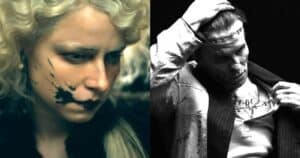
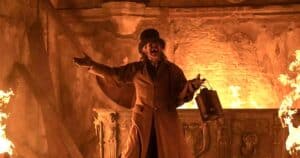
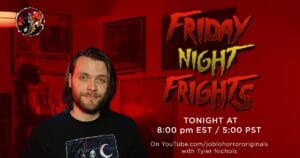
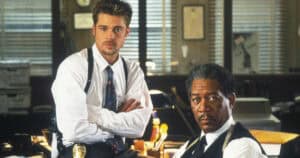
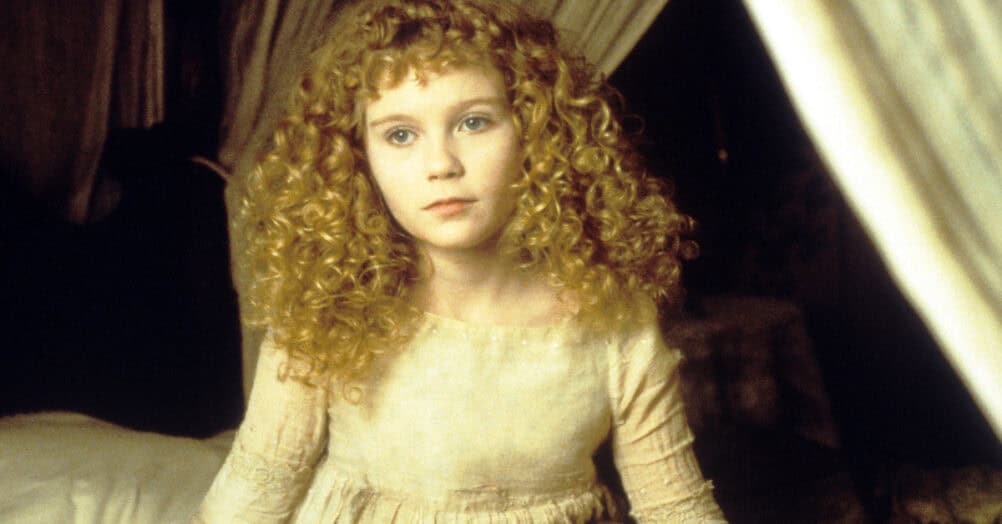
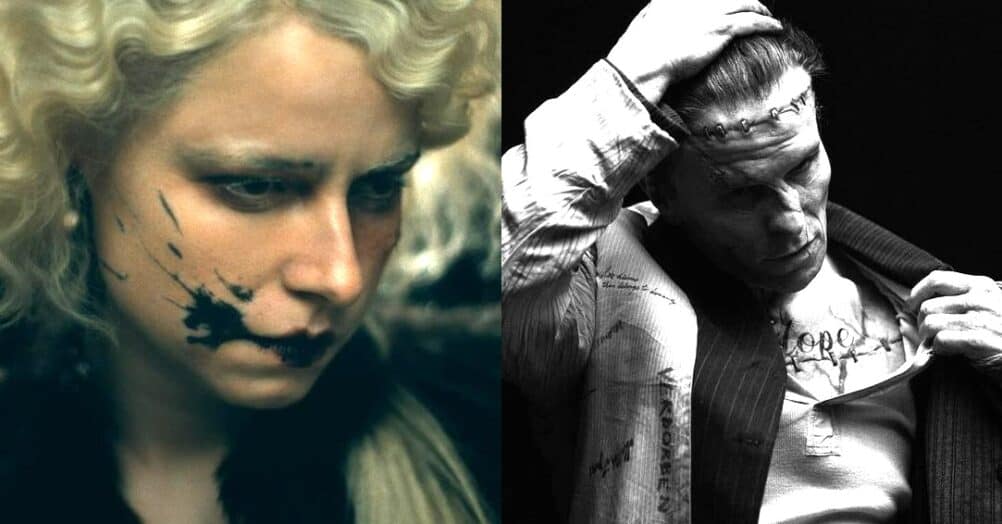
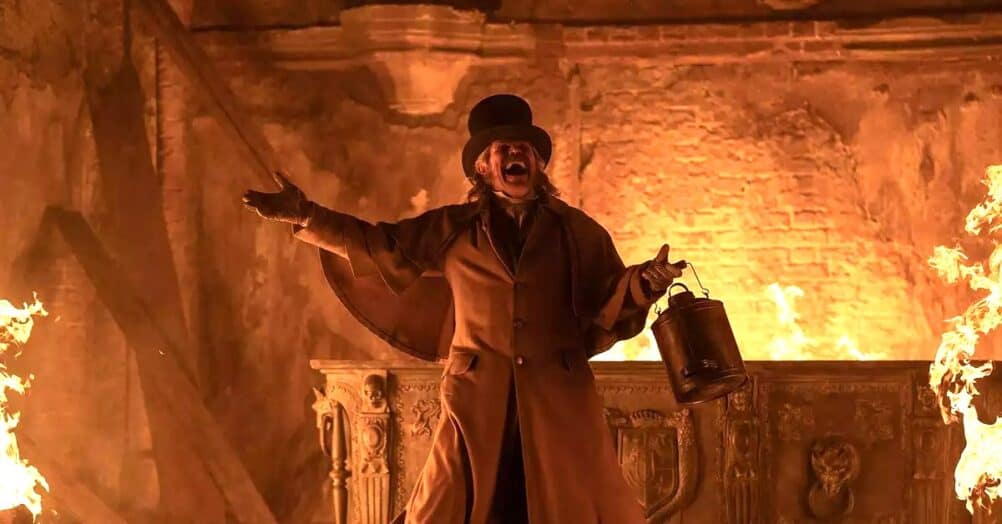
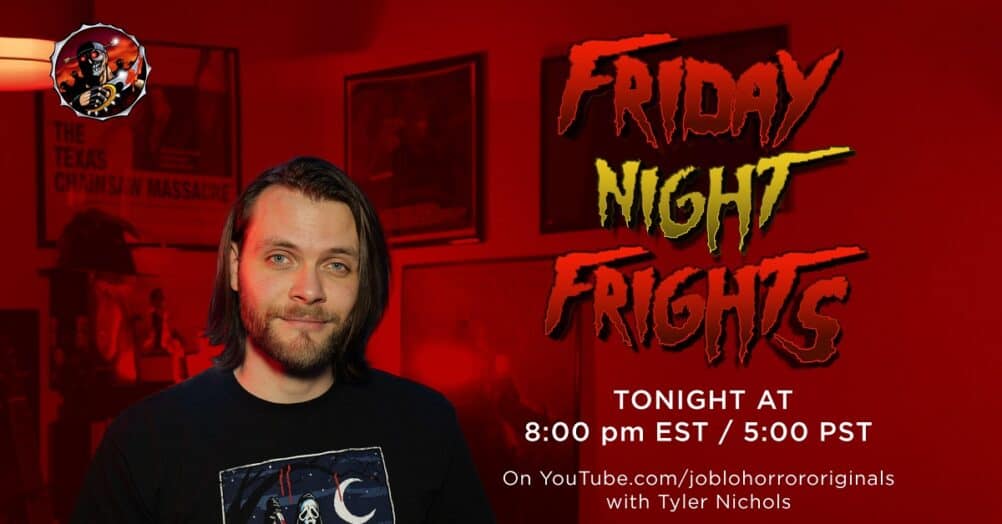
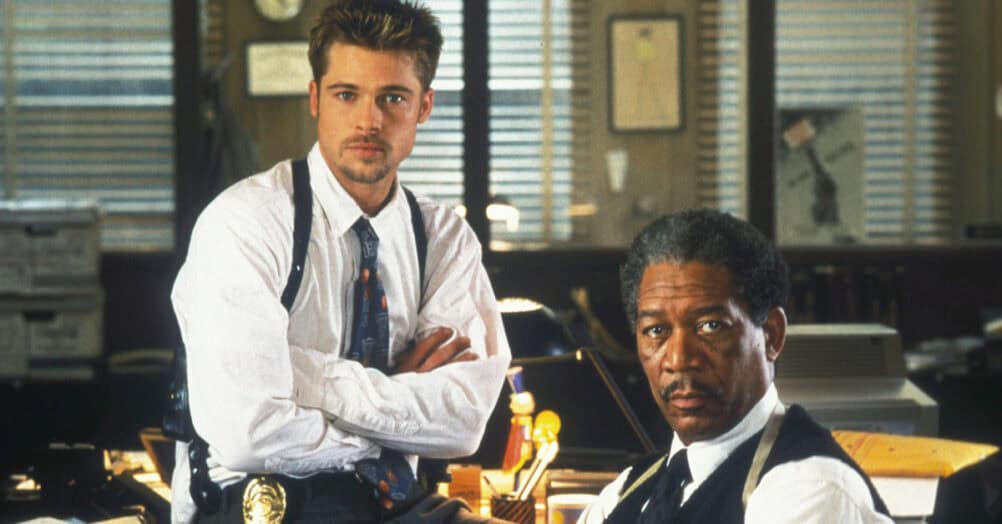
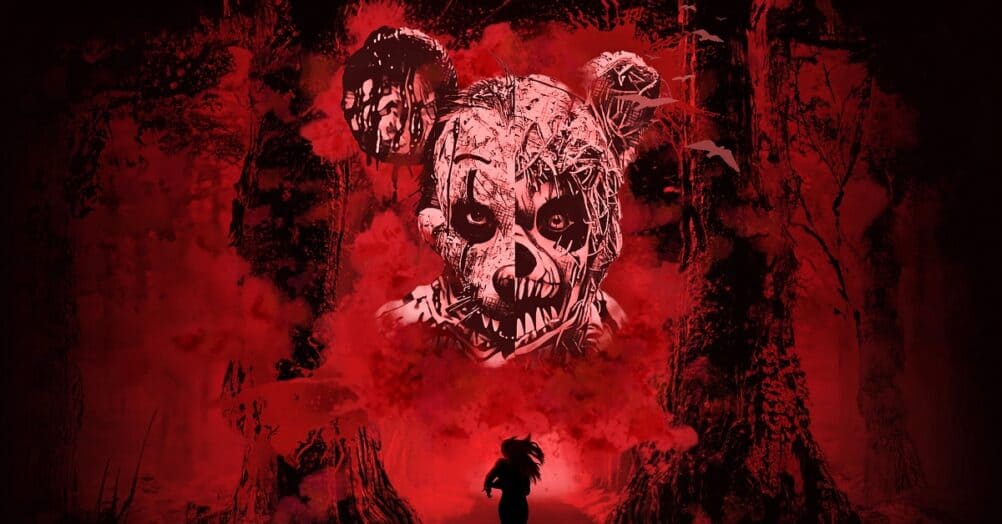
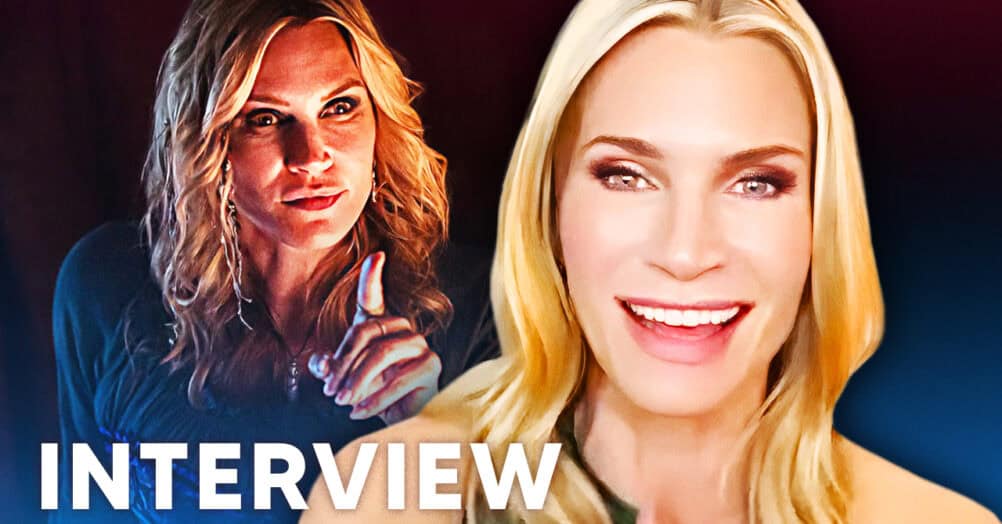
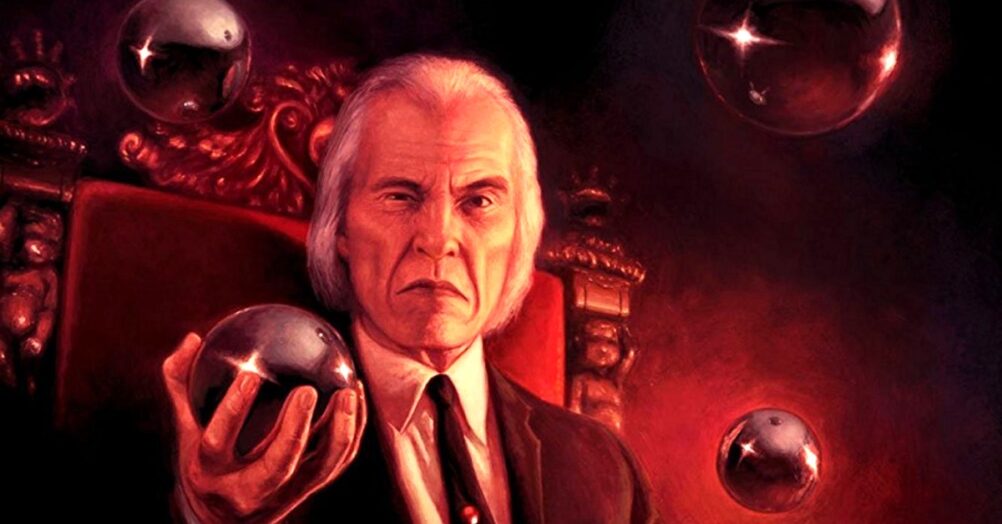
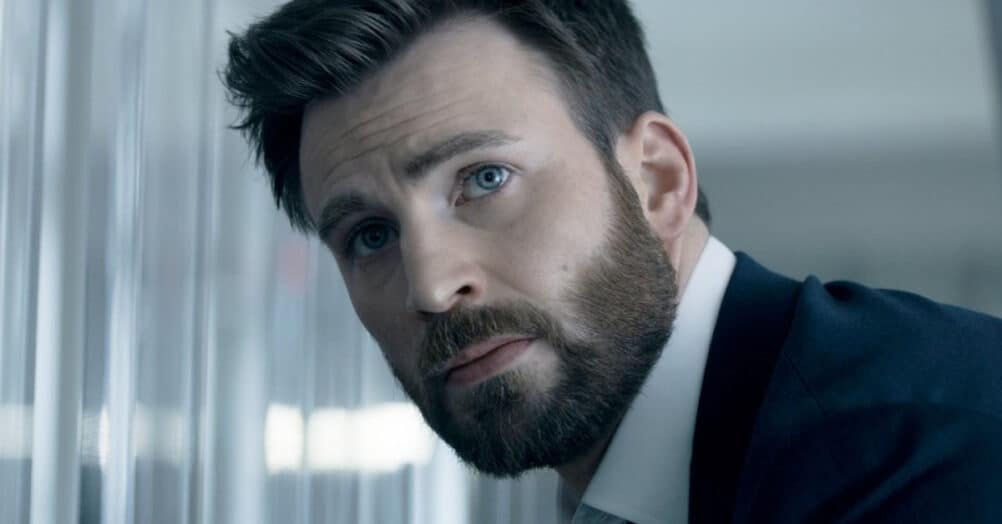
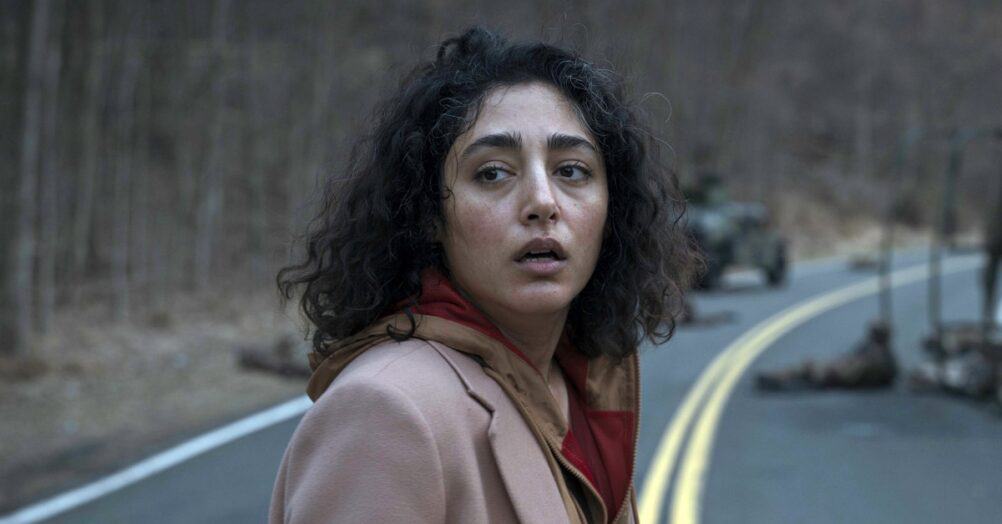
Follow the JOBLO MOVIE NETWORK
Follow us on YOUTUBE
Follow ARROW IN THE HEAD
Follow AITH on YOUTUBE